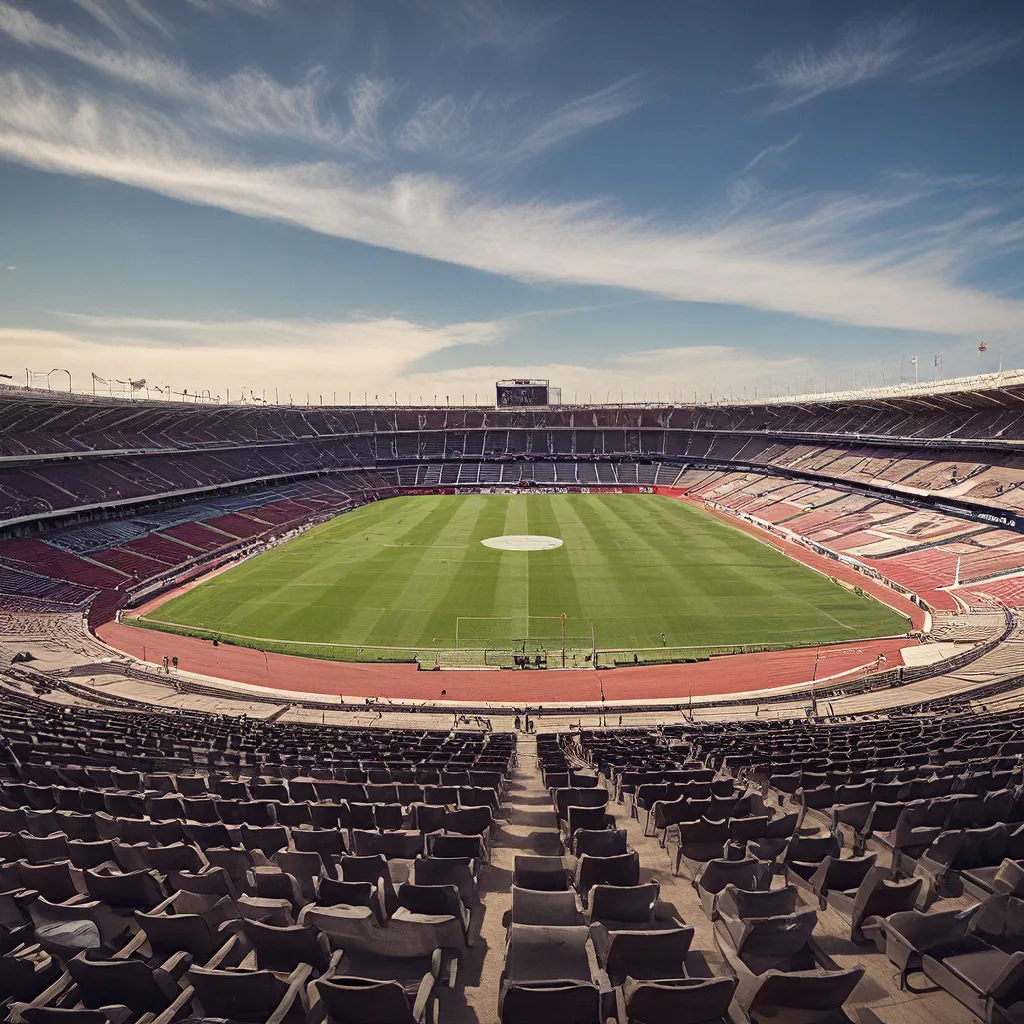
The Jewel of Santiago’s Sporting Legacy
The Estadio Nacional de Chile, often referred to as the “National Stadium of Chile,” stands as a testament to the rich sporting heritage and architectural grandeur of Santiago, the capital city of Chile. This iconic stadium has witnessed the triumphs and tribulations of the nation’s most beloved athletic events, serving as a stage for both international competitions and domestic league matches.
Nestled within the heart of Santiago, the Estadio Nacional de Chile has been a central figure in the city’s cultural landscape for over a century. Its construction began in 1937, with the stadium officially opening its doors in 1938. The initial design, conceived by renowned architect José Aracena, emphasized the neoclassical architectural style that was prevalent during the time, seamlessly blending the stadium’s imposing presence with the surrounding cityscape.
Over the years, the Estadio Nacional de Chile has undergone numerous renovations and expansions to keep pace with the evolving demands of modern sports and entertainment. In the 1960s, the stadium underwent a significant transformation, adding a second tier to its structure and increasing its seating capacity to over 47,000. This expansion allowed the venue to host the 1962 FIFA World Cup, a pivotal moment in the stadium’s history that cemented its status as a world-class sporting arena.
The Tumultuous History of a Resilient Landmark
The Estadio Nacional de Chile’s story, however, is not without its darker chapters. During the military dictatorship of Augusto Pinochet in the 1970s, the stadium was infamously used as a detention and torture center, casting a somber shadow over its storied past. This harrowing period in the stadium’s history serves as a stark reminder of the fragility of human rights and the importance of vigilance in preserving democratic values.
Despite these challenges, the Estadio Nacional de Chile has endured and emerged as a symbol of resilience and national pride. After the restoration of democracy in Chile, the stadium underwent a comprehensive renovation process to reclaim its status as a beacon of hope and unity. The refurbished facility now houses a dedicated museum, the “Museo de la Memoria y los Derechos Humanos,” which serves as a poignant reminder of the country’s tumultuous past and a testament to the power of reconciliation.
A Stage for Sporting Triumphs and Cultural Celebrations
Beyond its historical significance, the Estadio Nacional de Chile has long been the epicenter of Chile’s sporting excellence. The stadium has hosted countless matches featuring the country’s beloved national football team, as well as numerous domestic league games and international friendlies. The roar of the crowd and the electric atmosphere have become synonymous with the stadium’s identity, cementing its place as a revered institution in Chilean sports culture.
But the Estadio Nacional de Chile’s significance extends beyond the realm of sports. The stadium has also served as a stage for grand cultural celebrations, including the prestigious National Holidays festivities, where Chileans gather to commemorate their nation’s independence. The stadium’s vast open spaces and impressive architectural design have made it an ideal venue for these large-scale events, fostering a deep sense of community and national pride among the Chilean people.
Old Stadium Journey, a renowned website dedicated to exploring the world’s most captivating sporting venues, has highlighted the Estadio Nacional de Chile as a must-visit destination for sports enthusiasts and history buffs alike. The stadium’s enduring legacy and its ability to transcend the realm of athletics make it a true embodiment of Chile’s rich cultural heritage.
A Legacy of Resilience and Renewal
As the Estadio Nacional de Chile continues to evolve and adapt to the changing needs of modern sports and entertainment, it remains a testament to the resilience and adaptability of Chilean culture. The stadium’s ability to overcome its turbulent past and emerge as a symbol of unity and progress is a testament to the indomitable spirit of the Chilean people.
From hosting the world’s greatest football players to serving as a canvas for cultural celebrations, the Estadio Nacional de Chile has firmly established itself as a timeless guardian of Chile’s sporting and cultural legacy. Its story is one of triumph, tragedy, and ultimately, the triumph of the human spirit – a narrative that continues to captivate and inspire visitors from around the globe.
As the stadium prepares to welcome a new generation of sports enthusiasts and cultural aficionados, the Estadio Nacional de Chile stands as a shining example of how a physical structure can transcend its materiality to become a living, breathing embodiment of a nation’s identity. Through its enduring legacy, the stadium invites us to reflect on the power of resilience, the importance of preserving cultural heritage, and the transformative potential of sports and the arts in fostering unity and healing.

